The Huawei P8 Lite Review
by Brandon Chester on July 27, 2015 8:00 AM EST- Posted in
- Smartphones
- Huawei
- Mobile
GPU Performance
The Adreno 405 GPU is an interesting part. Because Snapdragon 615 is approaching upon Qualcomm's high end SoCs there's significantly more power on the GPU side of things than you'll get with SoCs meant for more low end devices like Snapdragon 410.
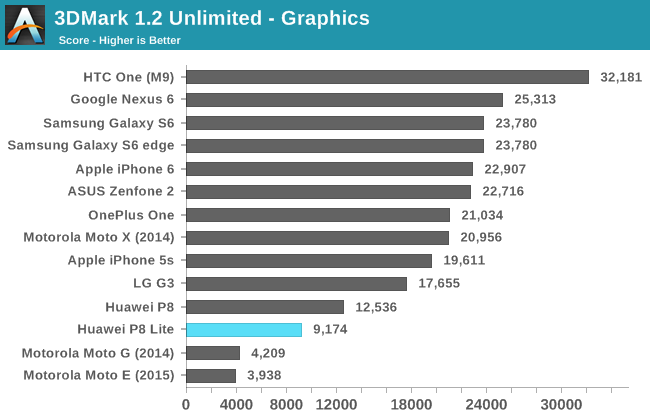
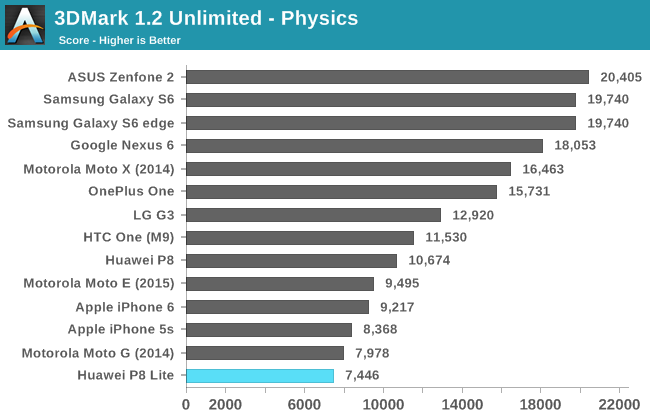
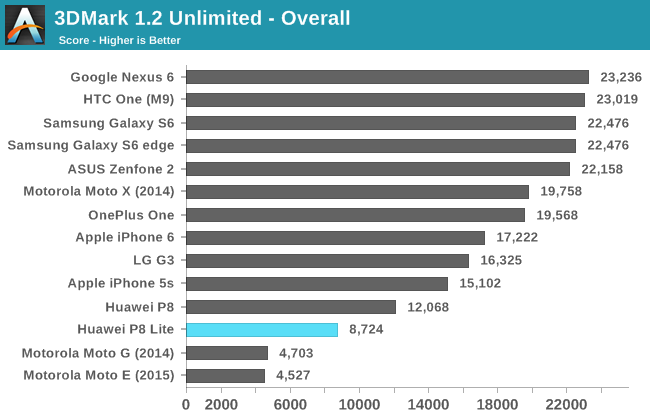
In 3DMark's graphics test we see that Adreno 405 holds a large lead over Adreno 305/306. The score achieved is more than twice as high. The physics test has a poor showing, lagging behind even the Snapdragon 400 based Moto G. Since the CPU side of Snapdragon 615 is certainly faster it's clear that this slowness is due to problems with Dalvik, which in turn is due to the P8 Lite shipping with KitKat. In the end the overall score isn't quite twice that of the Moto E, but it's still a significant improvement.
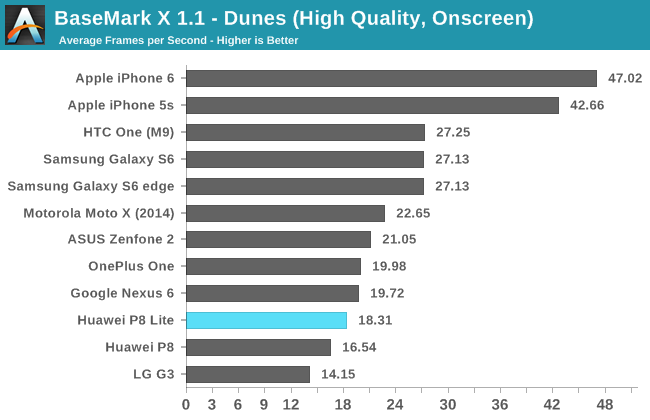
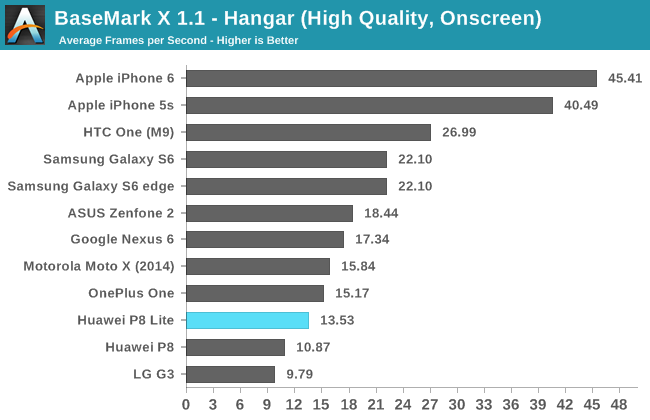
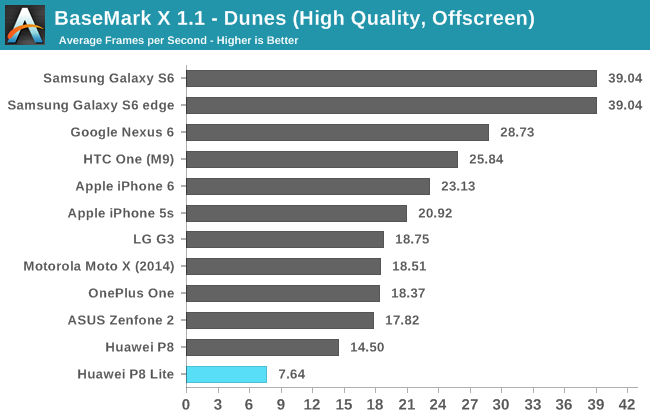
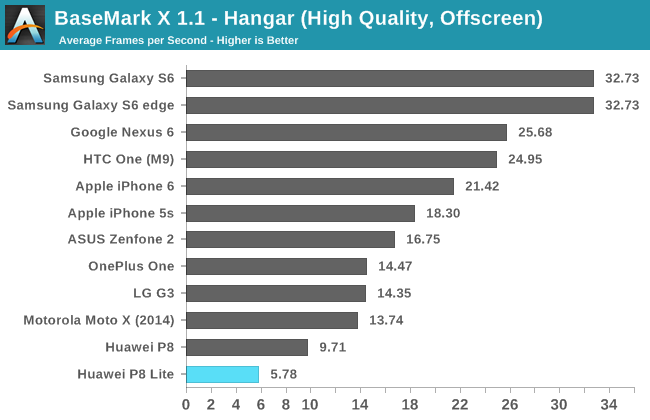
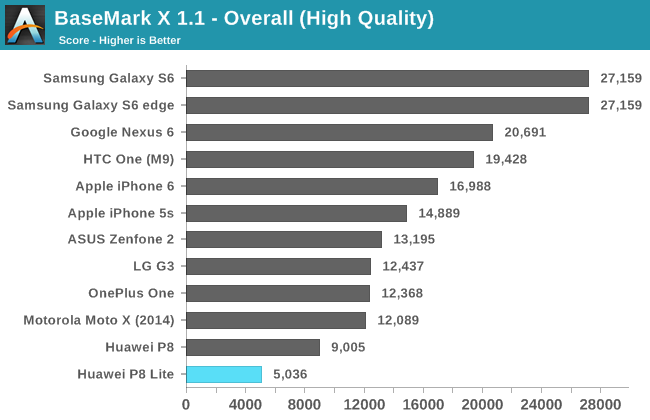
I don't have results for BaseMark X on the 2015 Moto E as the benchmark crashes before it completes. Unfortunately this means there's no Snapdragon 410 device to be used as a reference in this test. In the on screen results the P8 Lite doesn't come in last, but the only slower device is the LG G3 with its relatively unbalanced combination of an Adreno 330 GPU and a 2560x1440 display. In the off screen tests the P8 Lite falls behind the other devices tested, but it's not an unexpected result given the flagship status of the other devices on the chart.
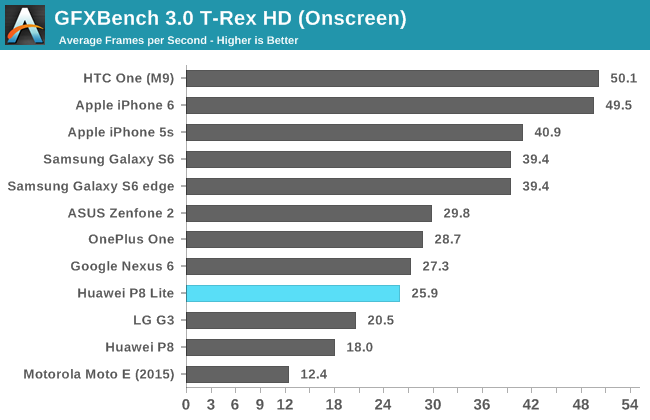
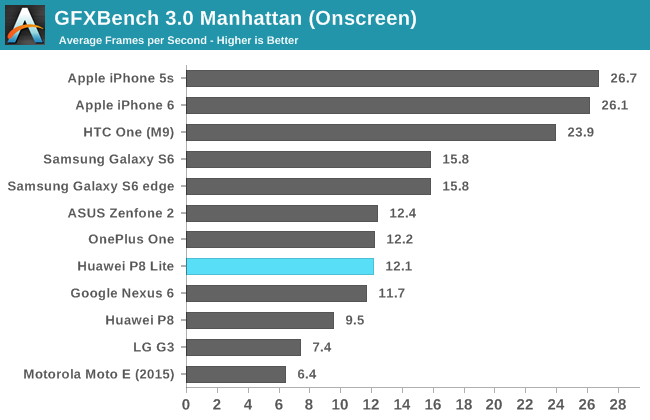
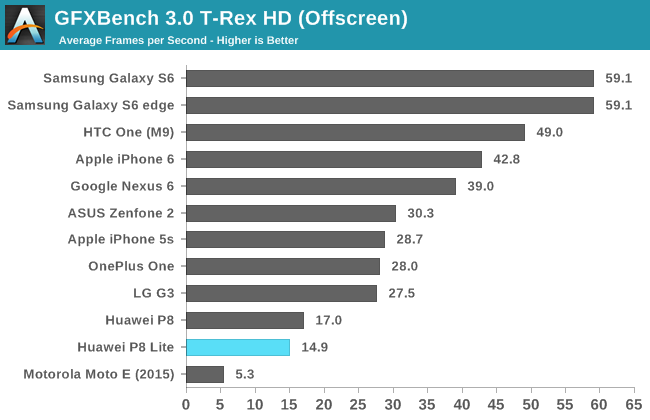
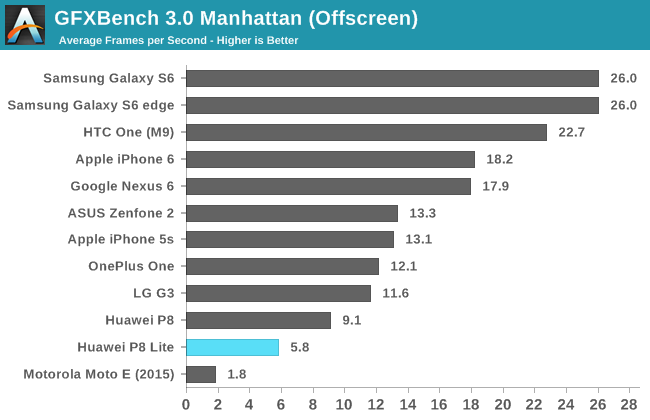
The last GPU test is GFXBench 3.0. In both T-Rex HD and Manhattan, the offscreen performance of Adreno 405 shows a large improvement over the performance of the 2015 Moto E. In fact, both tests have the P8 Lite achieving almost three times the performance of the Moto E. While the Moto E is obviously a cheaper device, the results show the significant GPU gains that Snapdragon 615 devices have compared to Snapdragon 410 devices.
Overall, the GPU performance of the Huawei P8 Lite is actually very good for a $249 device. One should definitely note that the ASUS Zenfone 2 is significantly faster and only costs $199, but that's quite an edge case and there really aren't many other devices at this price point that offer the GPU performance that the P8 Lite does.
NAND Performance
NAND performance is another important aspect of mobile devices. Poor NAND can be a serious bottleneck of system performance whenever something is being loaded from the internal storage, or when a background app is doing reads and writes or downloading updates.
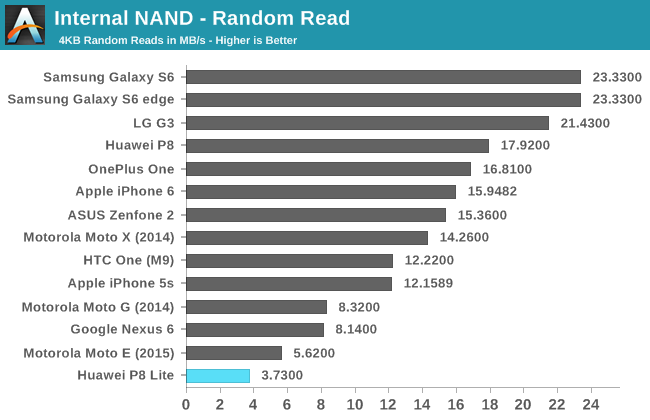
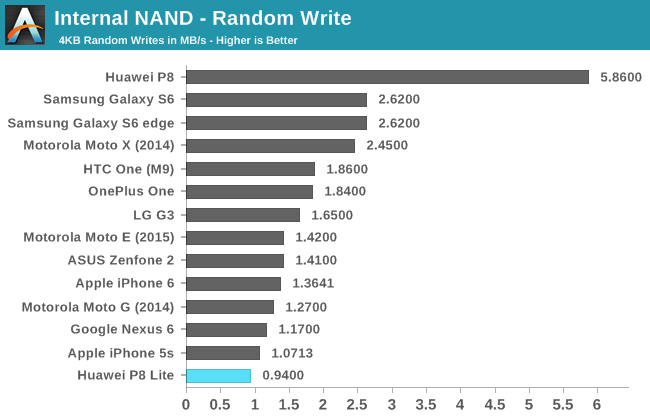
The P8 Lite comes in last for both random read and random write speeds. In the case of random read speeds the gap between it and the next device is fairly significant as well.
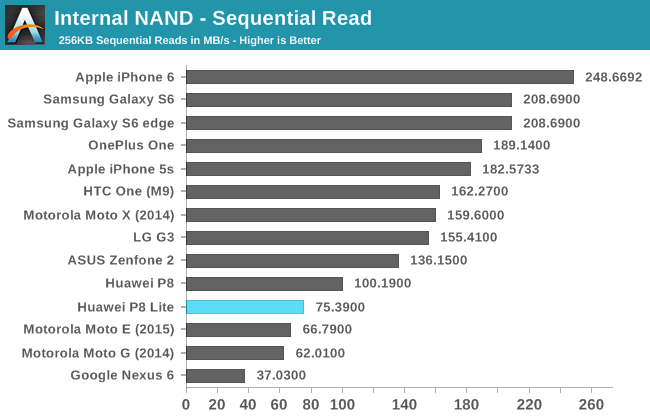
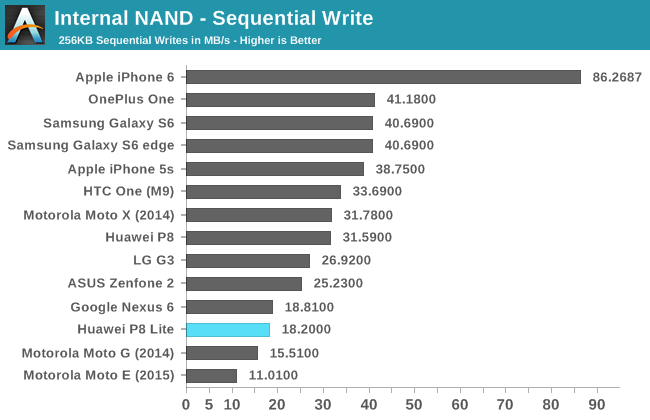
Sequential reads and writes on the P8 Lite are in a much better situation than random reads and writes, with the P8 Lite being faster than both the Moto E and Moto G in both cases. While it's not as fast as the latest flagship devices, I don't think it's at a point where it will cause any problems for the type of users who will purchase a phone like the P8 Lite.










45 Comments
View All Comments
Buk Lau - Wednesday, July 29, 2015 - link
It is capable of QC 2.0, they just don't ship you with a charger and you just have to get it yourself from somewherezebrax2 - Monday, July 27, 2015 - link
Error in the specifications table showing A7 instead of A53.jjj - Monday, July 27, 2015 - link
Disturbing that for a SoC known for it's overheating capabilities (yes this one too), you fully ignore the issue and don't look for throttling."Snapdragon 615 is really the best you're going to get at this price point"
That is clearly a false statement and not sure how can you make it. SD615 is likely the worst A53 based solution in this price range clock for clock and not just in CPU. If you factor in that others are going higher clocks (without overheating) in the same price band and even higher clocks for slightly costlier and more capable SoCs , your statement becomes even more absurd.
But that's when you factor in the SoC price not the device price. If you go by device price, the OnePlus One is 250$ and if you factor in China, a bunch of faster devices are at or very close that price.
T1beriu - Monday, July 27, 2015 - link
Source?jjj - Monday, July 27, 2015 - link
For what? SD615 can't do 1.7GHz and pretty much any device with those clocks is know to have problems. At 1.5GHz it throttles little if at all but that can depend on the device and requires investigation. As for how it does against competing 8xA53 SoCs from Hisilicon (hey those are actually worse), Marvell, Mediatek and Samsung it would take some time(that i don't have) to find a bunch of reasonably good links since too many can't be bothered to look beyond Qualcomm, just like AT loves to do.djw39 - Monday, July 27, 2015 - link
How can you say the Snapdragon 615 is "likely the worst A53 based solution in this price range" then?LiverpoolFC5903 - Tuesday, July 28, 2015 - link
The MTK 6752 is significantly faster than the SD 615 and runs cooler too, despite all the ores being clocked at a relatively high 1.7ghzThe 615 flatters to deceive and is hamstrung by memory bandwith issues and thermals. If they had provided a dual channel 32 bit RAM like the older Snapdragon 600 and paired it with the Adreno 320, it would have been a killer mid range chip. Alas,this is par for the course these days with Qualcom chipsets.
One more observation, the Zenfone 2 is absolutely suberb in terms of performance/price/ Nothing else in the midrange comes close to it in terms of both CPU and GPU performance. The 2.3 GHZ and 4 GB model at 300 USD performs as good as any Snapdragon 801 device and trades blows with the 805.
AndrewJacksonZA - Tuesday, July 28, 2015 - link
Totally off topic, so apologies in advance, but..."T1beriu" as your nick? Is it meant to be in reference to the Tiber River? Tiberius Caesar? Tiberium? Brigadier General Mark Jamison Sheppard must know! :-)
twizzlebizzle22 - Monday, July 27, 2015 - link
What's the benefit of using big little with the same core architecture between the clusters.Can't one cluster scale back under lighter workloads?
cmikeh2 - Monday, July 27, 2015 - link
You can fab the transistors for the two different clusters differently. For the high performance cluster, you would use a higher leakage, faster transistor (and power gate when not in use) and for the low power cluster use slower, but lower leakage transistors.